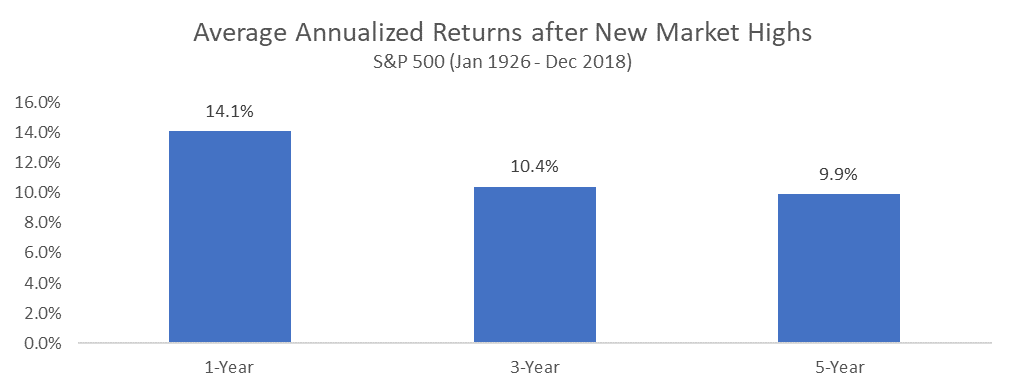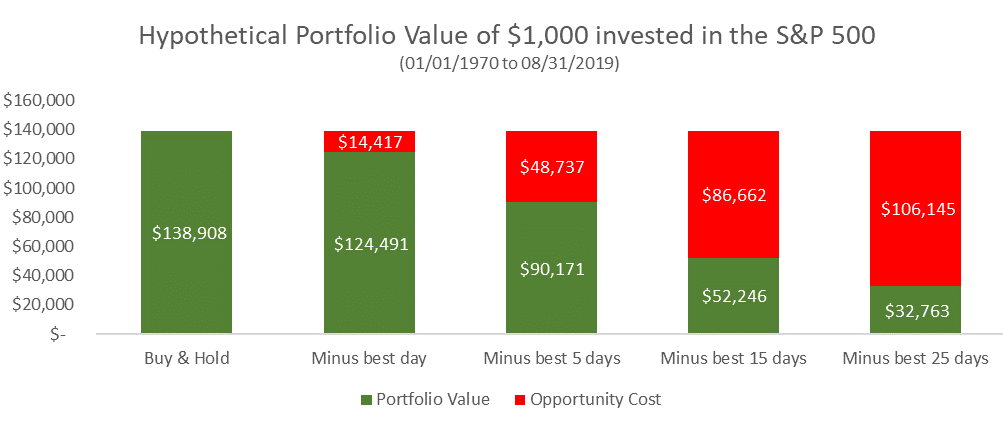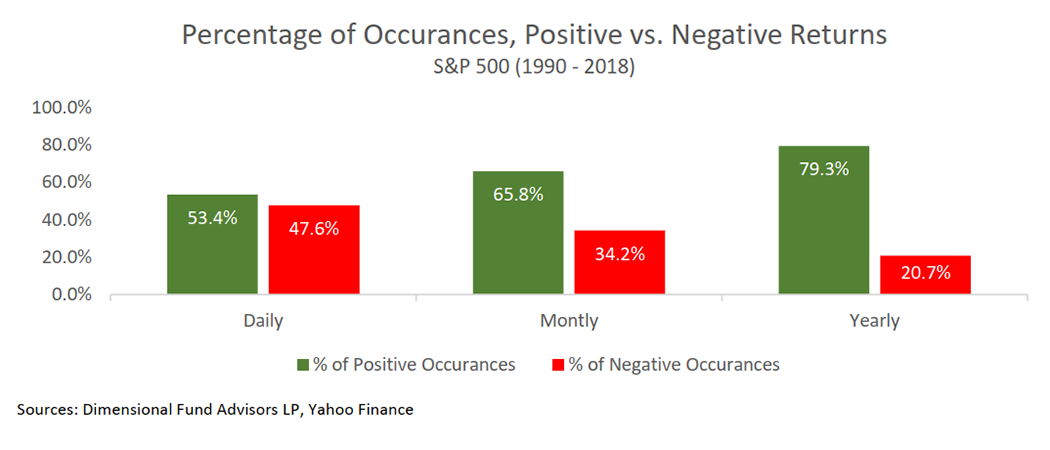Timing the Market
What are the odds of timing the stock market?

Timing the stock market is an investing technique where investors attempt to invest during times of upwardly moving stock prices and subsequently sell out of stocks before prices decline, allowing investors to sidestep any losses and enjoy only gains. For most people, the emotional distress felt during losses far exceeds the joy of gains when comparing similar dollar amounts of profit and loss. In Prospect Theory: An Analysis of Decision under Risk, by Daniel Kahneman & Amos Tversky (1979), it is thought that the pain of losing is psychologically about twice as powerful as the pleasure of gaining. Because of this natural human tendency to avoid losses, it is easy to see the appeal of market timing as an investing strategy if only it could be implemented successfully.
Reasons to be concerned with today’s financial markets
It is easy to understand why investors are concerned to invest in today’s markets. There is a U.S. presidential election on the horizon with a seemingly wide range of possible outcomes in economic policy. Market experts prognosticate the market could rally 20% on the election of one candidate or loose 25% under another, but who really knows. There is upheaval in the middle east, and there is a trade war with China starting to undercut global economic growth. We have a U.S. stock market at all-time highs with valuations appearing expensive. There are so many justifiable reasons to time this market and not invest. Yet if we look back through history, there have often been reason for concern. There have been many geo-political events, wars, impeachments, uncertain elections, market at all-time highs, and trade disputes, but despite this frequent backdrop of negative narratives, the financial markets have rewarded long term investors. Since 1970, a $1,000 dollar investment in the S&P500 would have grown to over $138,908 through August 31,2019. (see chart below)
The market is at all-time highs
A common concern of today is, “US stocks are at all-time highs, I don’t want to invest now and suffer a loss when stocks decline.” This form of market timing only works if an investor can accurately predict when the markets will decline, but is the fact that US stocks are at an all-time high a good indicator of future declines? The data suggests not. In a study from Dimensional Fund Advisors starting from 1926, average annualized returns of the S&P 500 after the index hit new all-time highs, were positive on average, 14.1% over the next year, 10.4% over the next three years, and 9.9% over the next five years. The fact that markets are at a high, does not necessarily mean markets are at “the” high. Only with the benefit of hindsight will one know, the day of the market top.

As you can see, failure to invest in the market over long periods of time can result in significant lost opportunity. The negative impact for missing just a few of the markets best days can also have profound negative implications for your portfolio. In the hypothetical example since 1970, where an investment of $1,000 turn into a gain of $138,908. The consequences of missing the best day in the market costs an investor $14,417 and resulted in a portfolio of $124,491. Missing out on just five best days costs an investor $48,737, resulted in a portfolio worth only $90,171. Missing out on a few of the markets best days, results in significantly worse investing outcomes than that of a simple buy and hold strategy.

The odds
In Ola Stevenson’s famous 1981 study, 93% of American drivers rated themselves as better than average. I hope we all can agree that 93% of the drivers cannot be better than average. As this and many other surveys show, humans tend to suffer from a cognitive bias known as the Heuristic of Overconfidence. There are billions of dollars traded every day in the financial markets, by thousands of investors, MBAs, CFAs, Hedge Fund managers, Portfolio managers, analysts, traders, and individuals. It requires a special sense of illusory superiority, to think yourself better than average in this talent pool. But if you are feeling lucky, you had better be right because the odds of being wrong are high. Since 1990, the market has been up 53.4% of the days, 65.8% of the months, and 79.3% of the years. The more days you sit out, the more months that go by, the more years that pass uninvested, your odds of success have dwindled.

Conclusion
Even professional investors often fail at timing the market. Studies have shown that over 5, 10, and 20-year periods, most professionally managed funds have underperformed, whether because of poor security selection, poor market timing, or just poor luck. Unless you truly possess above average market intelligence, skill, or luck, the odds of market timing success are not in your favor and the cost of error is high. With these kinds of odds against you, the evidence suggests it’s not timing the market, rather time “in” the market that counts most. We believe that for most of the people, most of the time, market timing is a bad idea. Working with an adviser to help formulate an asset allocation consistent with your personal objectives and risk considerations, diversifying across asset classes, sectors, and geographies, rebalancing as markets change, and focusing on what you can control, should result in better outcomes than trying to time the market.
D. Chris Tucker
Chief Investment Officer



